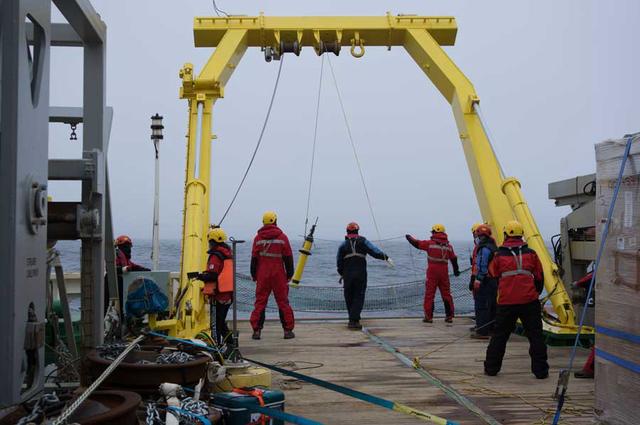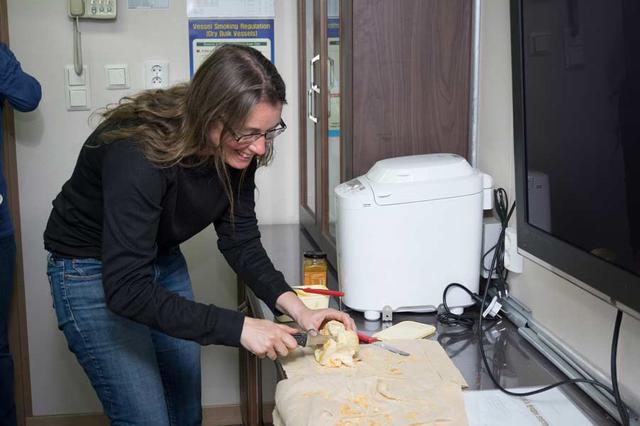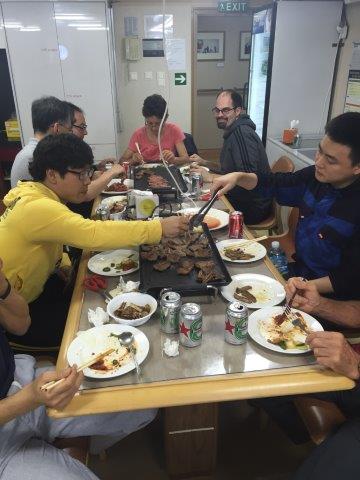The Amundsen Sea – we are finally here! The viw outside our round windows has changed – it is no longer only grey and blue. Between us and the horizon there’s the odd iceberg bobbing about and every now and then some sea ice and maybe a lonely snow petrell or a seal… but no penguins, just yet!
We are now quite precisely 15711 km from Bergen and home – and you proabably want to know why we came here.
The water in the Amundsen Sea is of course just as blue as the water outside Bergen – but on our oceanographic charts we tend to color it red. Red because it is (relatively) warm, red because the ice shelves are melting faster here than in most other places around Antarctica. This is not a coincidence – the ice shelves, i.e. the floating extension of the ice sheet covering the continent, are melting because the warm water is entering the cavity beneath them. And you all know what happens when you put ice in warm water.

Melting ice shelves are a big concern in the chapter of the IPCC-report that discussed sea level rise. It is a concern, because the consequences if they are to melt are so large, but the ice shelves also represent a big question mark, because we know so little about how the work and about how they are affected by (and affect) the ocean around them. The ice shelf itself is floating, so the sea level is not affected when it melts, but when it thins, it tends to speed up and the glacier or ice sheet feeding it will follow. Ice is then moved from land to the ocean – and the sea level rises.
During our weeks at sea will do measurements and install instrument – both in the sea and up on the ice shelves – to better understand what is happening, and to measure the amount of heat that the ocean is transporting towards the ice shelf and how the ice shelf is responding.
A lot of the time on board is used to do “CTD-stations”. CTD stands for “Conductivity-Temperature-Depth, and it is a bunch of sensors mounted on a frame (most of the time with a number of bottles attached to it) that we lower down to the ocean using a big winch. On its way down to the bottom the CTD is continuously measuring and sending the data back to us. On the screen in front of us a profiles show how salinity and temperature is changing as the instrument moves downward. The “bottles” on the frame are open in both ends so the water is flowing through them and when the CTD is returning up to the surface we stop it every now and then to close one of the bottles – in that way we can bring water from different depths up, that we (or the biologists onboard) can analyze.

A few hours ago we took the first CTD-station and the instrument was sent down to the bottom 3450 m below us. We are still above deep water, and we will continue to do CTD-stations on our way in towards the shallow continental shelf. Down in the deep there is plenty of “warm” water, the big question is how much of it that makes it up on the continental shelf, in towards the floating ice.
We are now getting used to life onboard… we’ve learnt what buttons to press to make the Korean laundry machine start, I’ve learnt to stay away from the red (and thus spicy) food and we’ve made the bread baking a routine! My colleague Anna (from Gothenburg University) has been onboard Araon on previous expeditions, and after spending eight weeks at sea with no real bread last time she was on board, she decided to bring a bread machine (and 25 kilos of flour!). The Koreans normally don’t eat bread, but when the smell of freshly baked bread is spreading in the corridors they are eager to come and taste!


Do the Math! Oceanic heat and melting ice
Experiment: How much salt is there in the ocean?
